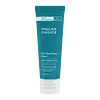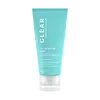What's inside
What's inside
 Key Ingredients
Key Ingredients

 Benefits
Benefits

 Concerns
Concerns

 Ingredients Side-by-side
Ingredients Side-by-side

Water
Skin ConditioningKaolin
AbrasiveBentonite
AbsorbentGlycerin
HumectantSalix Alba Extract
Skin ConditioningStearic Acid
CleansingSteareth-2
EmulsifyingAloe Barbadensis Leaf Juice Powder
Skin ConditioningSea Whip Extract
Skin ConditioningColloidal Oatmeal
AbsorbentBisabolol
MaskingAscorbyl Palmitate
AntioxidantTocopheryl Acetate
AntioxidantPhospholipids
Skin ConditioningPanthenol
Skin ConditioningRetinyl Palmitate
Skin ConditioningCaprylyl Glycol
EmollientButylene Glycol
HumectantEthylhexylglycerin
Skin ConditioningHexylene Glycol
EmulsifyingDisodium EDTA
Phenoxyethanol
PreservativeWater, Kaolin, Bentonite, Glycerin, Salix Alba Extract, Stearic Acid, Steareth-2, Aloe Barbadensis Leaf Juice Powder, Sea Whip Extract, Colloidal Oatmeal, Bisabolol, Ascorbyl Palmitate, Tocopheryl Acetate, Phospholipids, Panthenol, Retinyl Palmitate, Caprylyl Glycol, Butylene Glycol, Ethylhexylglycerin, Hexylene Glycol, Disodium EDTA, Phenoxyethanol
Salicylic Acid 0.5%
MaskingWater
Skin ConditioningKaolin
AbrasiveBentonite
AbsorbentTitanium Dioxide
Cosmetic ColorantButylene Glycol
HumectantC12-15 Alkyl Benzoate
AntimicrobialCetyl Esters
EmollientMagnesium Aluminum Silicate
AbsorbentGlycerin
HumectantIllite
AbrasiveTapioca Starch
Zea Mays Starch
AbsorbentCamellia Sinensis Leaf Extract
AntimicrobialPyrus Malus Fruit Extract
Skin ConditioningChrysanthellum Indicum Extract
Skin ConditioningHydrolyzed Rhodophyceae Extract
Chlorella Vulgaris Extract
Skin ConditioningEpilobium Fleischeri Extract
Skin ConditioningVaccinium Myrtillus Fruit Extract
Skin ConditioningBrassica Campestris Seed Oil
Skin ConditioningAllantoin
Skin ConditioningBisabolol
MaskingZinc PCA
HumectantCopper PCA
HumectantLauroyl Lysine
Skin ConditioningSodium Lauroyl Sarcosinate
CleansingXanthan Gum
EmulsifyingCitric Acid
BufferingSodium Citrate
BufferingSodium Chloride
MaskingPhenoxyethanol
PreservativeEthylhexylglycerin
Skin ConditioningSalicylic Acid 0.5%, Water, Kaolin, Bentonite, Titanium Dioxide, Butylene Glycol, C12-15 Alkyl Benzoate, Cetyl Esters, Magnesium Aluminum Silicate, Glycerin, Illite, Tapioca Starch, Zea Mays Starch, Camellia Sinensis Leaf Extract, Pyrus Malus Fruit Extract, Chrysanthellum Indicum Extract, Hydrolyzed Rhodophyceae Extract, Chlorella Vulgaris Extract, Epilobium Fleischeri Extract, Vaccinium Myrtillus Fruit Extract, Brassica Campestris Seed Oil, Allantoin, Bisabolol, Zinc PCA, Copper PCA, Lauroyl Lysine, Sodium Lauroyl Sarcosinate, Xanthan Gum, Citric Acid, Sodium Citrate, Sodium Chloride, Phenoxyethanol, Ethylhexylglycerin
 Reviews
Reviews

Ingredients Explained
These ingredients are found in both products.
Ingredients higher up in an ingredient list are typically present in a larger amount.
Bentonite is an aluminium phyllosilicate clay with great absorbent properties. The name 'bentonite' comes from the area where the largest source is found: Fort Benton, Wyoming.
As a clay, bentonite is often used to absorb excess oil and provide exfoliation. It has also been shown to have some antibacterial and anti-inflammatory properties. Studies show bentonite was effective at calming dermatitis from poison ivy and in diaper dermatitis of infants. Bentonite has also been shown to act as a barrier against toxic compounds on your skin.
Sunscreens containing bentonite display higher water resistance and stay on the skin for much longer. The sunscreens containing bentonite also show higher potency and UV light absorbtion.
Bentonite is naturally created from volcanic ash and several natural weathering/hydrothermal processes.
A common usage of bentonite is removing excess protein from white wines. Bentonite contains a property of being able to absorb large amounts of protein from aqueous solutions.
Phyllosilicate clay has a structure formed by sheets.
Learn more about BentoniteBisabolol is famous for its skin soothing properties. It does this by blocking inflammatory signals, helping to reduce your body's reaction to irritation.
This ingredient also interferes with the process of hyperpigmentation. This can help with reducing dark spots and uneven tone.
Bisabolol is an antioxidant. Antioxidants help fight free-radicals. Free-radicals are molecules that may damage your skin cells. By fighting these free-radicals, Bisabolol may slow down signs of aging.
Studies have shown Bisabolol to have antimicrobial properties and may be a fungicide. These properties help preserve a product's shelf life.
All these properties makes bisabolol a great skin barrier helper ingredient.
Bisabolol also helps the absorption of other ingredients.
Note: Synthetic Bisabolol has been shown to be less effective.
Learn more about BisabololButylene Glycol (or BG) is used within cosmetic products for a few different reasons:
Overall, Butylene Glycol is a safe and well-rounded ingredient that works well with other ingredients.
Though this ingredient works well with most skin types, some people with sensitive skin may experience a reaction such as allergic rashes, closed comedones, or itchiness.
Learn more about Butylene GlycolEthylhexylglycerin (we can't pronounce this either) is commonly used as a preservative and skin softener. It is derived from glyceryl.
You might see Ethylhexylglycerin often paired with other preservatives such as phenoxyethanol. Ethylhexylglycerin has been found to increase the effectiveness of these other preservatives.
Glycerin is already naturally found in your skin. It helps moisturize and protect your skin.
A study from 2016 found glycerin to be more effective as a humectant than AHAs and hyaluronic acid.
As a humectant, it helps the skin stay hydrated by pulling moisture to your skin. The low molecular weight of glycerin allows it to pull moisture into the deeper layers of your skin.
Hydrated skin improves your skin barrier; Your skin barrier helps protect against irritants and bacteria.
Glycerin has also been found to have antimicrobial and antiviral properties. Due to these properties, glycerin is often used in wound and burn treatments.
In cosmetics, glycerin is usually derived from plants such as soybean or palm. However, it can also be sourced from animals, such as tallow or animal fat.
This ingredient is organic, colorless, odorless, and non-toxic.
Glycerin is the name for this ingredient in American English. British English uses Glycerol/Glycerine.
Learn more about GlycerinKaolin is a clay. It is used for oil control and to help minimize pores. Like other clays, kaolin has the ability to absorb excess sebum or oil. This can help clean out pores and mattify the skin.
Some types of kaolin may have exfoliating properties. When water is added to kaolin, it becomes a paste with small abrasive particles.
Most kaolin is a white color, but may be pink/orange/red depending on where it comes from.
The name 'kaolin' comes from a Chinese village named 'Gaoling'. Kaolin clay comes from rocks rich in kaolinite. Kaolinite, the mineral, has a silicate layered structure. Kaolinite is formed from chemical weathering of aluminum siilicate minerals.
Besides skincare, kaolin is commonly used to make glossy paper, in ceramics, toothpaste, and as medicine to soothe stomach issues.
Learn more about KaolinPhenoxyethanol is a preservative that has germicide, antimicrobial, and aromatic properties. Studies show that phenoxyethanol can prevent microbial growth. By itself, it has a scent that is similar to that of a rose.
It's often used in formulations along with Caprylyl Glycol to preserve the shelf life of products.
Water. It's the most common cosmetic ingredient of all. You'll usually see it at the top of ingredient lists, meaning that it makes up the largest part of the product.
So why is it so popular? Water most often acts as a solvent - this means that it helps dissolve other ingredients into the formulation.
You'll also recognize water as that liquid we all need to stay alive. If you see this, drink a glass of water. Stay hydrated!
Learn more about Water